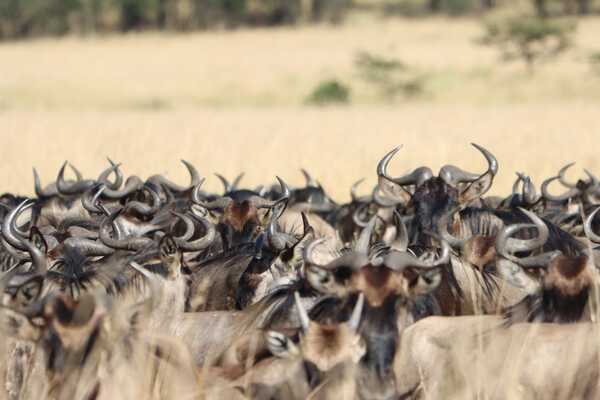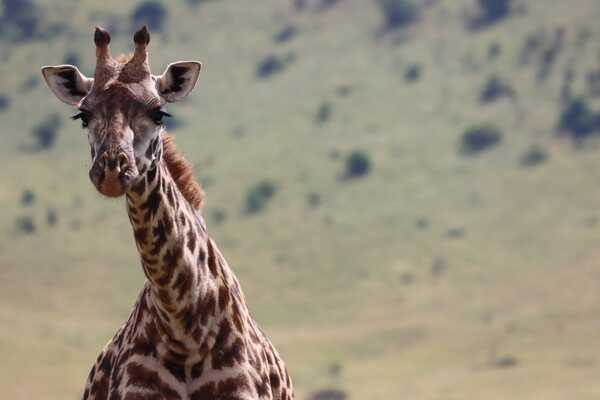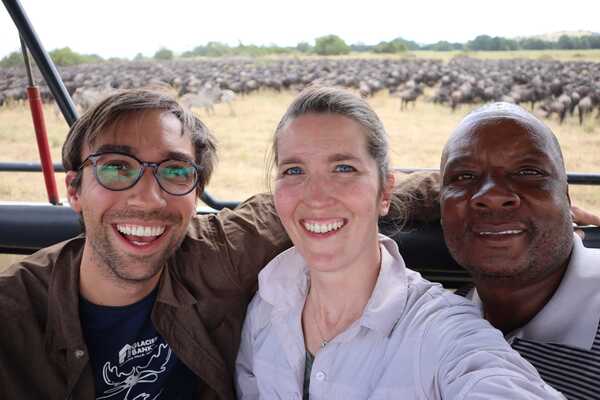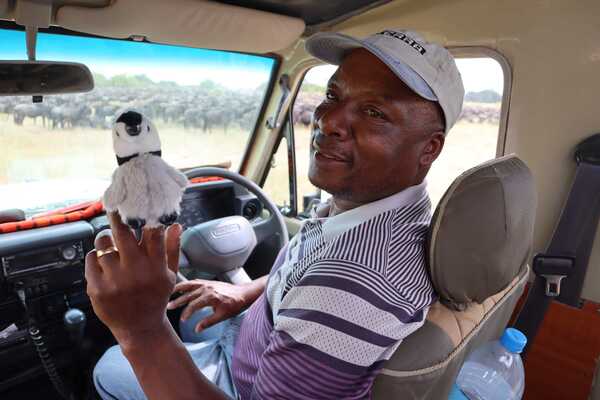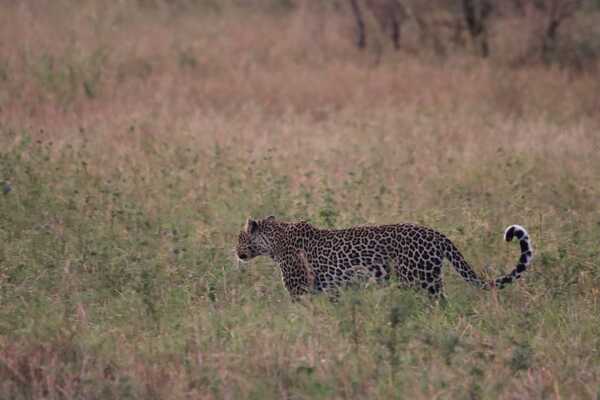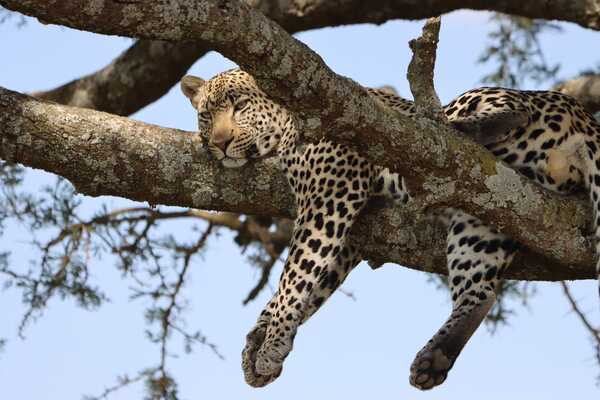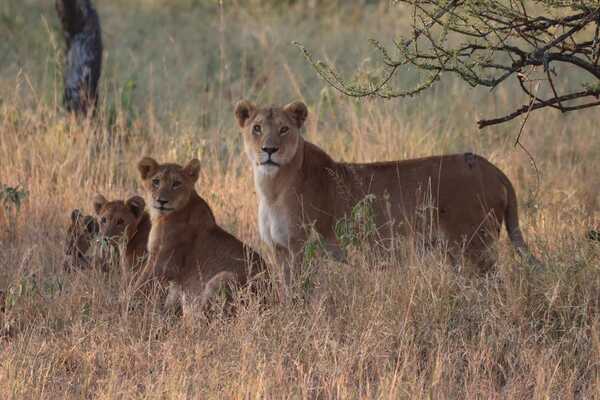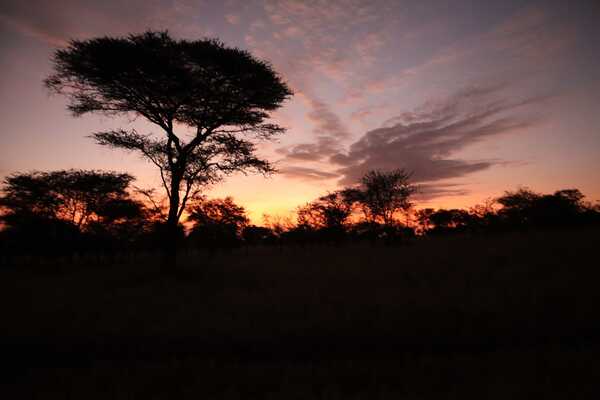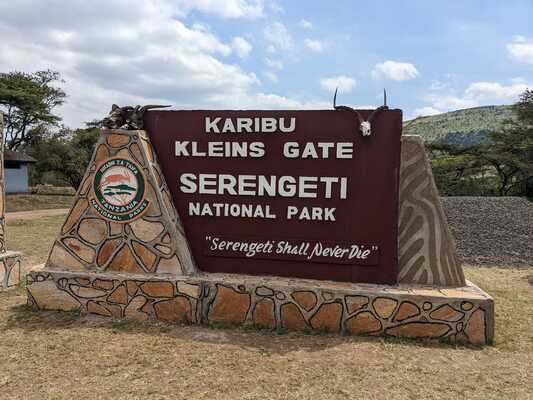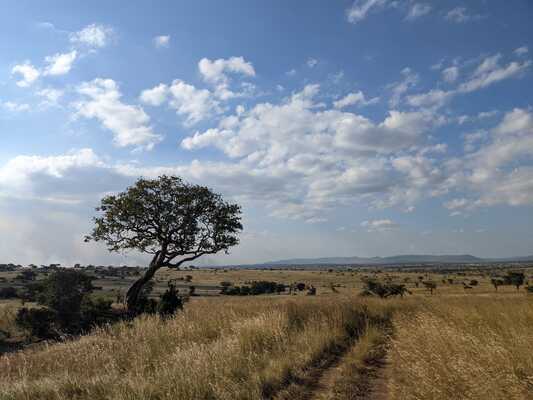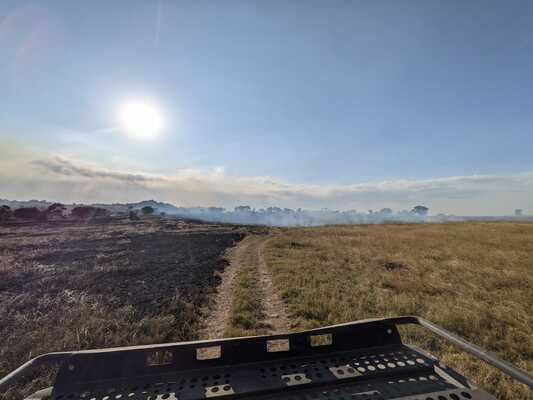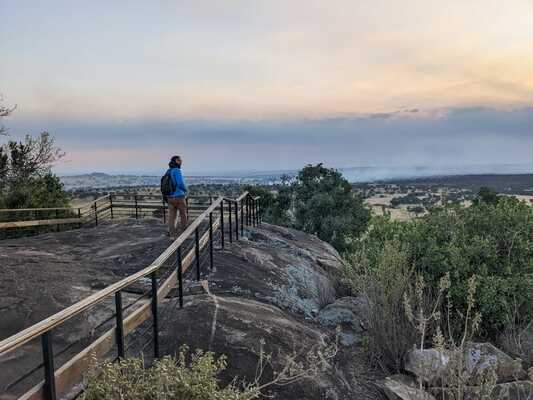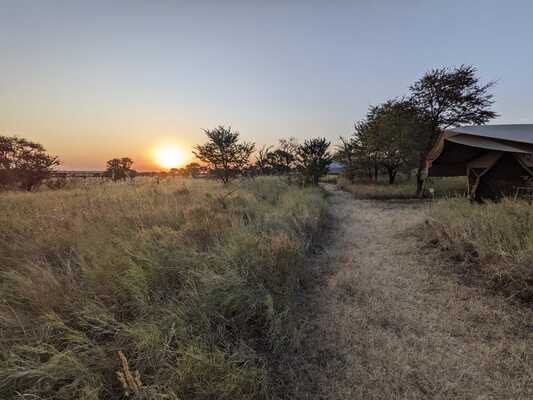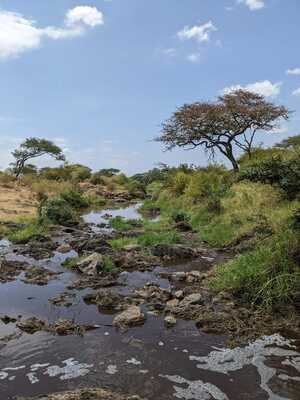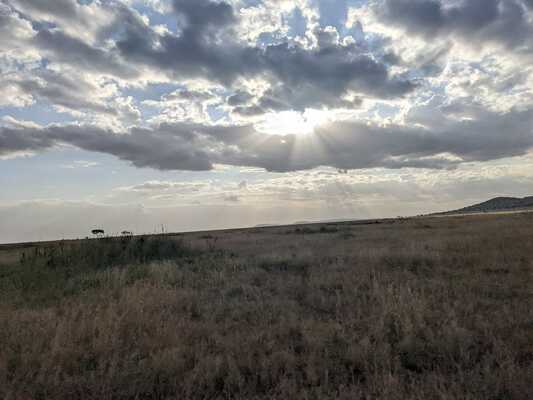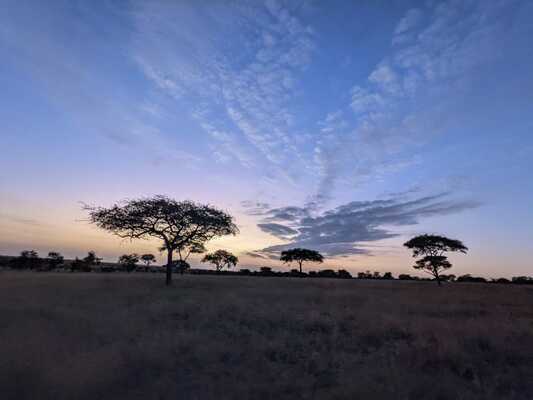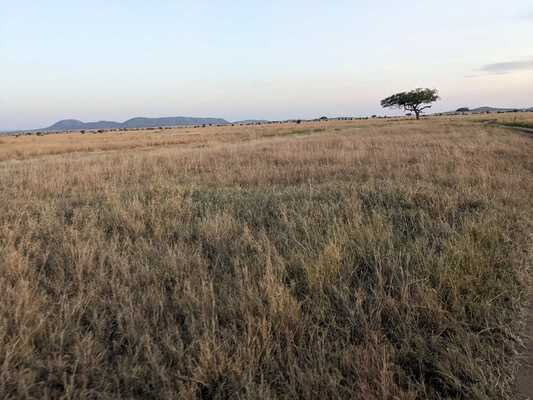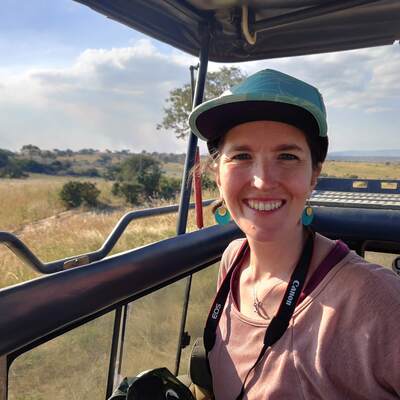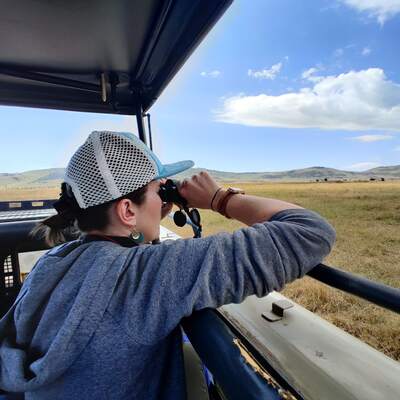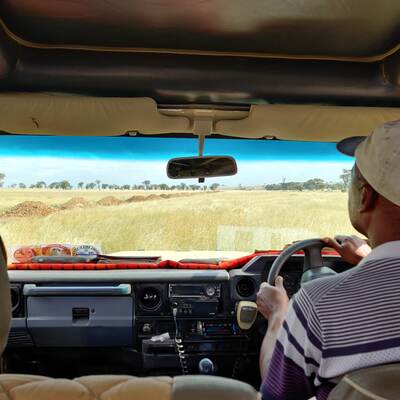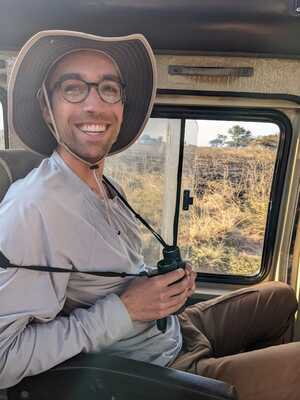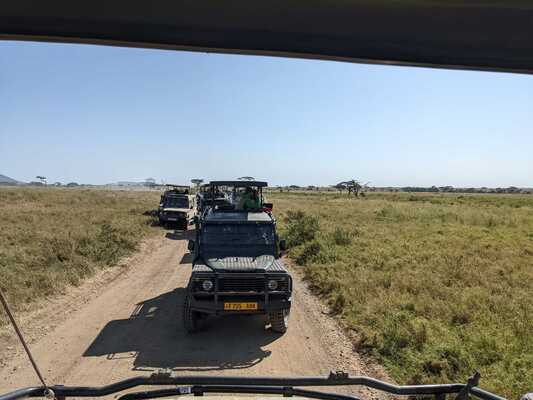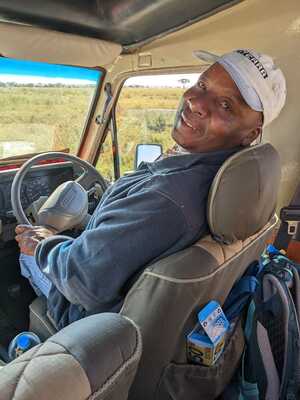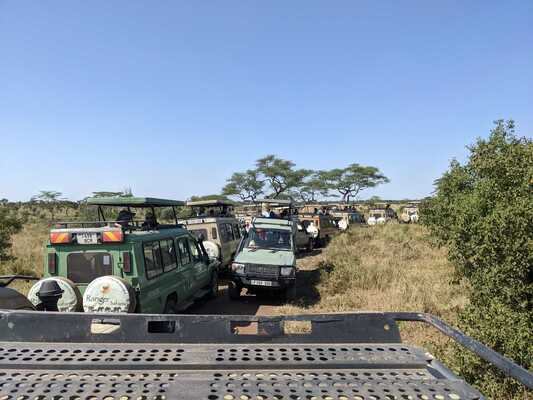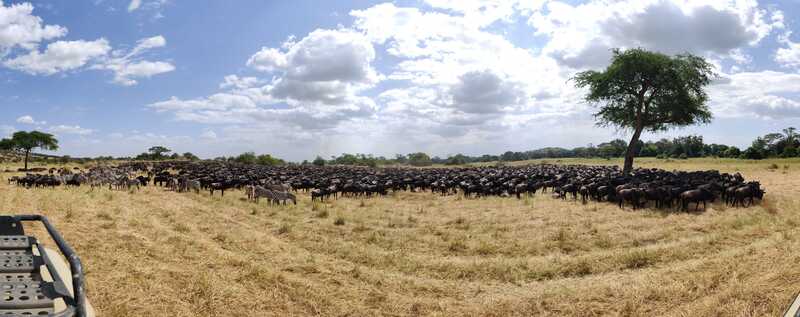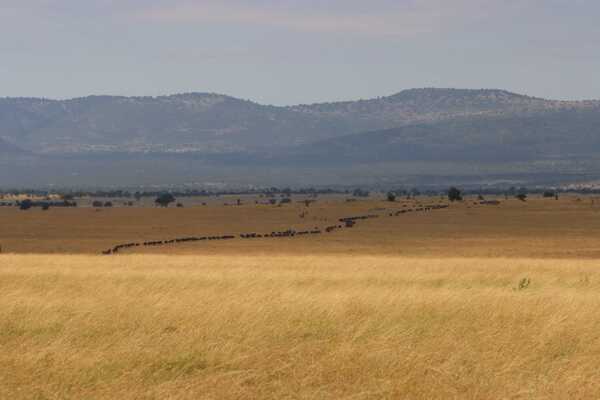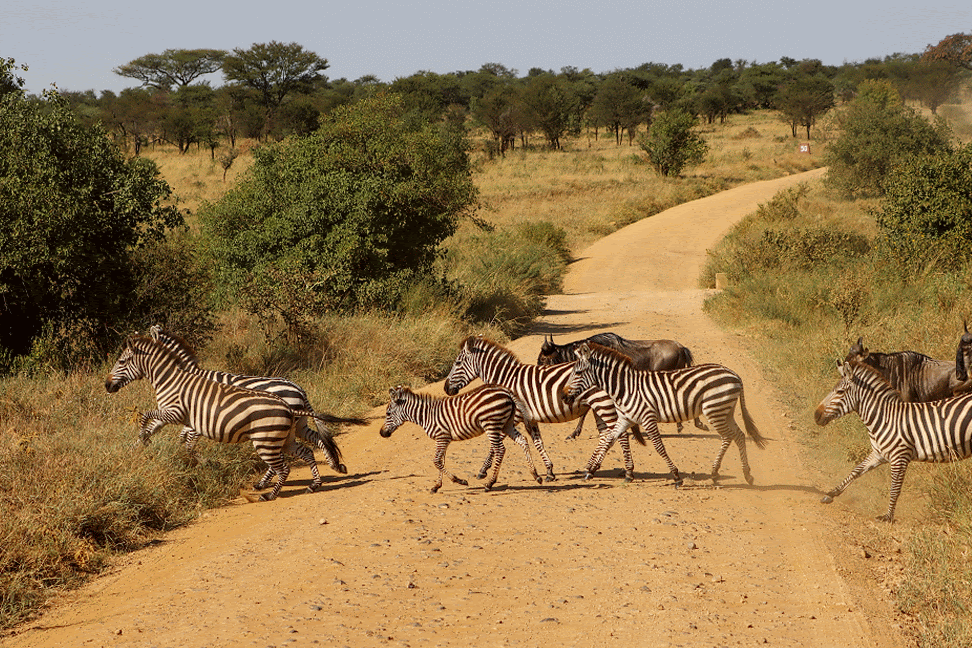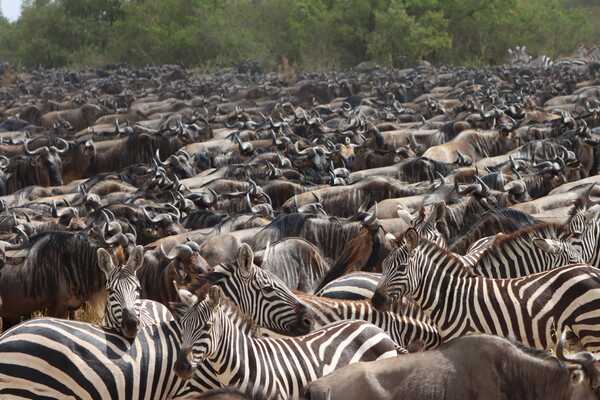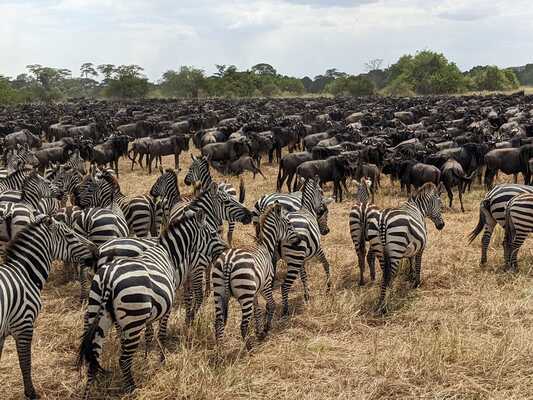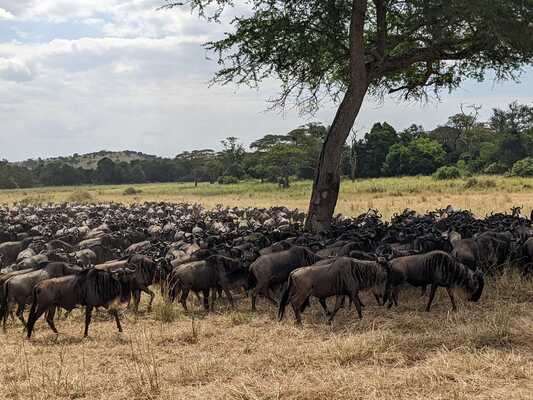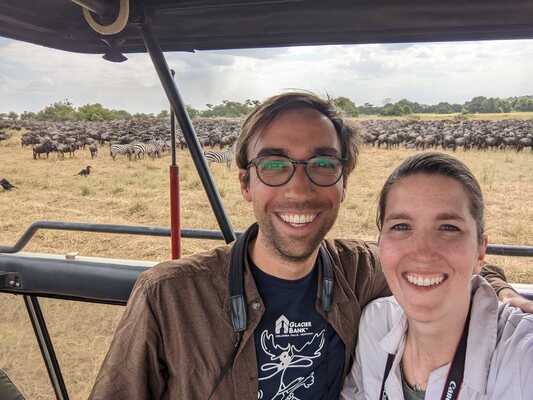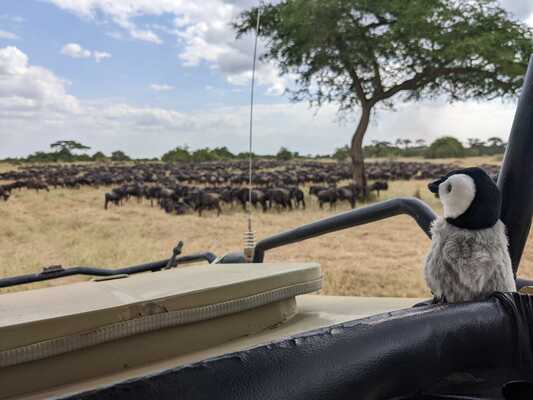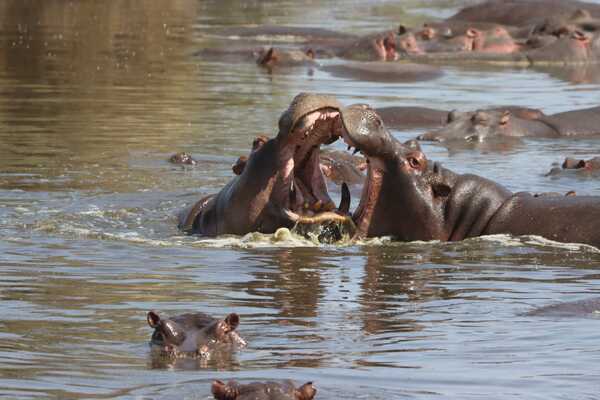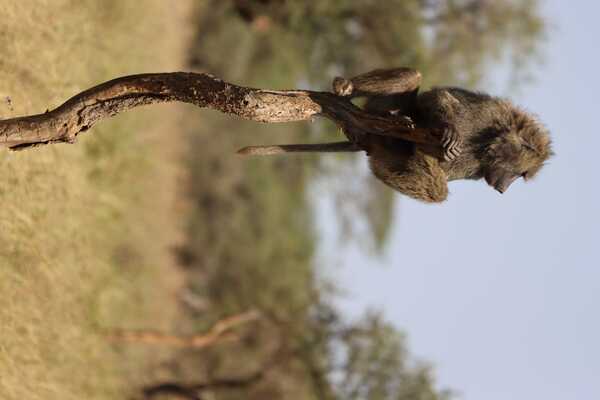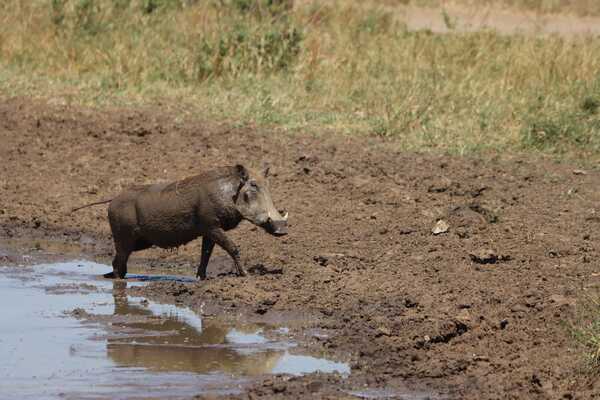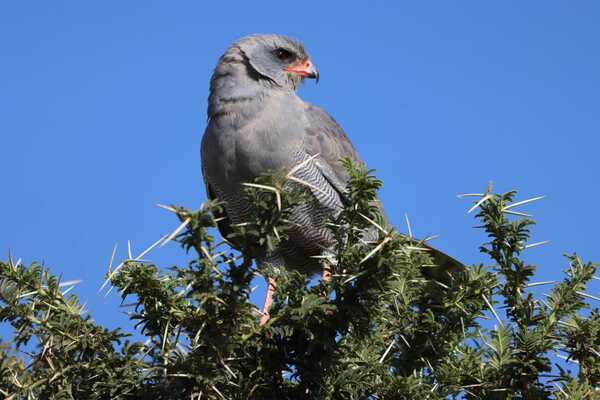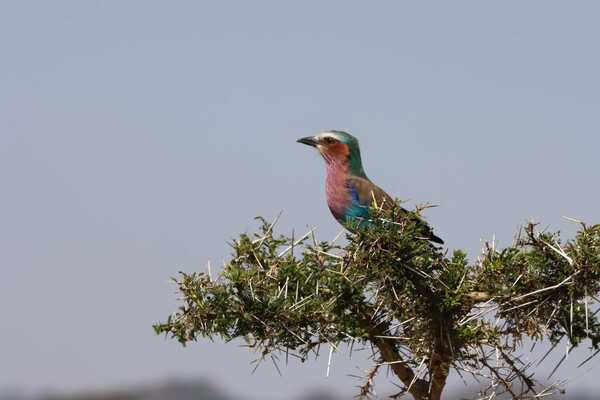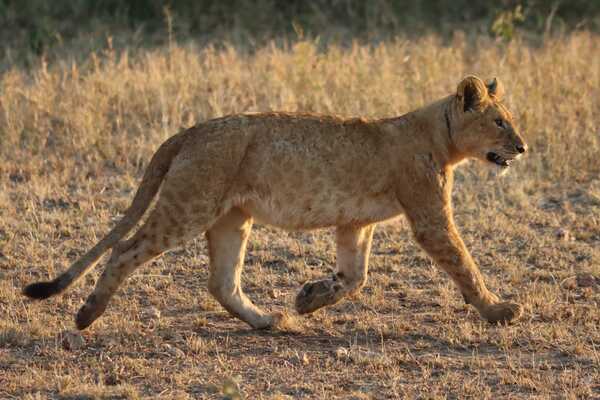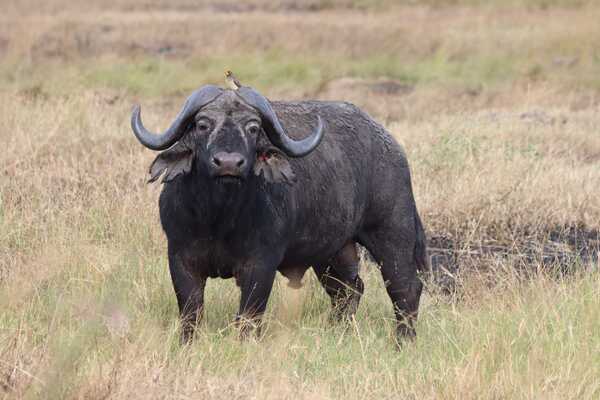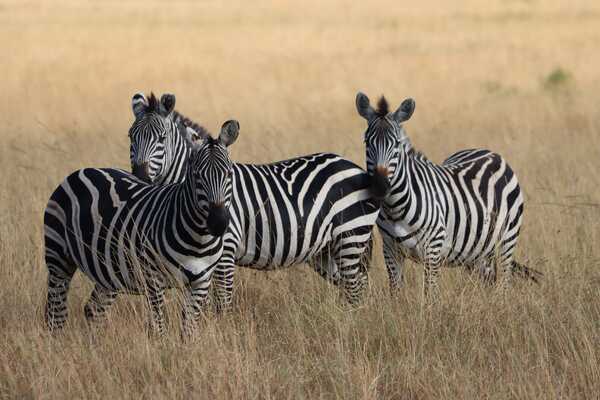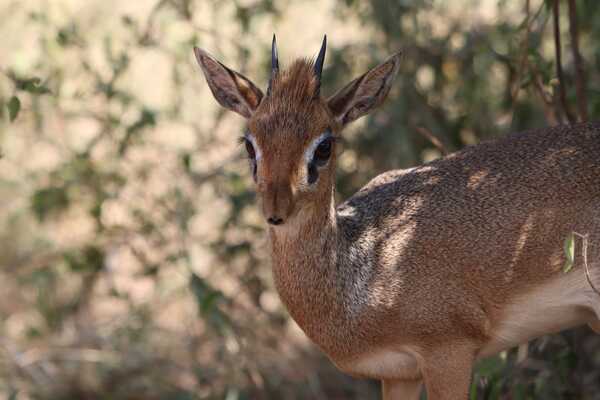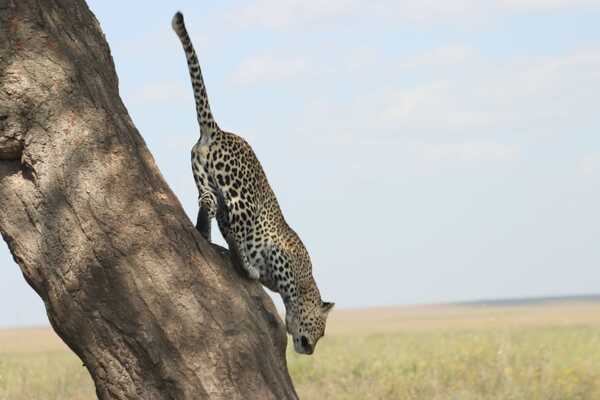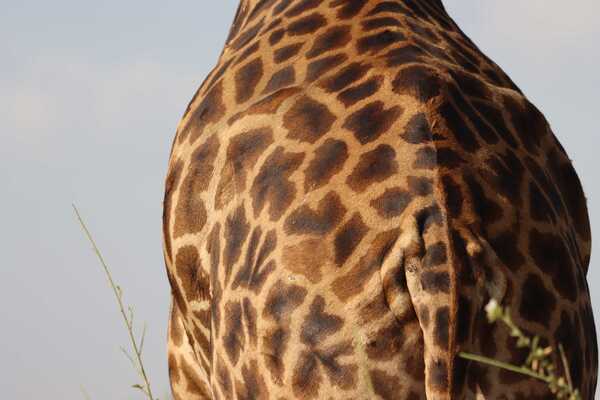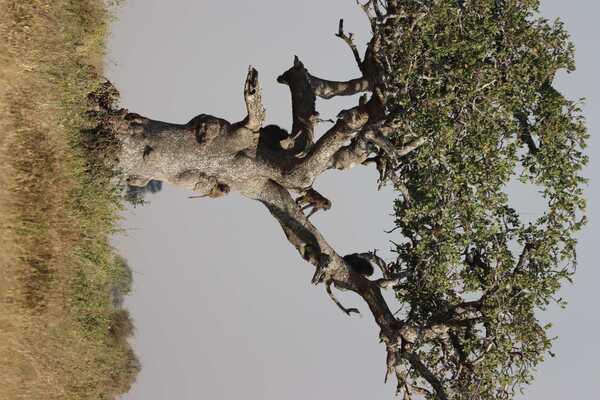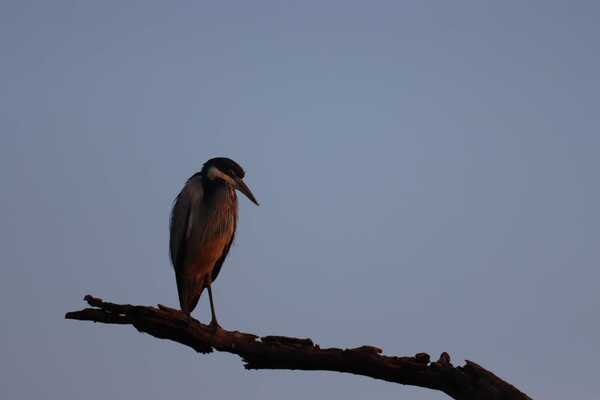The Serengeti: The Animals and Place
A Special Place
Visiting the Serengeti feels like a dream.
Beforehand, knowing we were going to “the Serengeti” felt like a dream: we were going to see the world’s first UNESCO World Heritage site, watch the largest big-mammal migration on the planet, and directly observe large, surreal animals in their habitat. During our time there, it felt like a dream: watching lions nap and elephants monitor their young when crossing the road. Now, two weeks post-safari on a plane back to New York, it is still surreal. And quite tangible.
The Serengeti is a special, sacred place for this planet – in my view. It has three habitats: the plains, the woodlands, and the savannah. Animals move through these areas freely, some preferring one habitat over another, but having slightly different behaviors in each. It is also an exceptionally large area, which thousands and thousands of animals living there. Different species live in harmony and support one another in a delicate ecosystem.
And the animals. We saw everything so many times over. Elephants, giraffes, lions, leopards, gazelle, impalas, zebras, wildebeests, hyenas, and hippos were essentially daily sightings. The whole thing felt like we were watching a National Geographic episode, it was surreal.
We were there for 7 days/6 nights, staying in 3 different areas. This meant that we saw a true diversity of animal behavior – not just “saw the animal, check” but really understanding what is normal and how these animals operate. Elephants are extremely destructive to trees, hesitant around humans, and incredibly polite (and empathetic) to one another. Lions sleep all the time, know they are at the top of the food chain and still weary of humans due to both past and current hunting, and are terrible parents. Hippos, however, are fantastic parents. More giraffes are gay than straight, and they just stare when humans are nearby. Zebras and wildebeests travel together because zebras have great eyesight and wildebeest have a great sense of smell – together being stronger to find predators. Different antelope species often graze together. Once a potential predator is spotted by its potential prey, the predator stops hunting to not expel the energy and fail. You look for leopards in trees by finding their dangling tail, and they are very solitary. And so many more facts that we now understand about the natural world of this special place.
Safari Life
First, let me tell you a little about “safari” life. If you go to the Serengeti, you go with a guide who is the driver in your specially-designed safari jeep. The top pops up for you to stand above the car and watch animals through binoculars, giving everyone a clear view while keeping you safe from wild animals. The car is closed with windows and doors – which helps to also give the animals peace of mind, as they get scared when humans come out of vehicles (knowing we are dangerous). The windows open sideways, allowing you to also sit in the vehicle and look out at the amazing landscape while you are driving.
You essentially drive around the beautiful landscape until your guide spots an animal or hears another guide share their animal finding on the radio. Then you go and watch the animal do whatever it is doing. You watch for a while, at some point you get bored watching or the animal moves out of view. You leave that viewing and immediately start searching for another animal from the car. You do this for 8 hours a day – either in one trip or split into two trips (early morning and later afternoon). It is exhilarating and exhausting. You are focused and curious, then you are bumping along the dirt roads looking for more, then you are focused. It’s hot and dry (for our season), there’s some wind and dust, and periodically tsetse flies.
There’s also a sensory overload of the environment. The plains and woods alike are amazing. They just keep going, into the horizon. The periodic acacia tree sticks out. And, in the dry season, it is all golden grasses. The sky is an intense brightness for 12 hours a day, at the equator with the length of the day consistent.
Overall, it is beautiful and overwhelming. It’s the Serengeti.
We saw everything. In another post, I have a list of all the animals we saw each day, and it is quite long. We had a good guide, named Honest, and were incredibly lucky in the animals we saw. Each day continued to amaze us. Every day we’d go out thinking “well, we’ve seen so much, so what would another day bring?” and then we’d see several incredible and new things.
On our last day, we had an 11 am flight and had been in the Serengeti for 6 full days. We went out for our last game drive, lasting 3-4 hours in the morning, each secretly thinking “this is another early morning animal drive, will we see anything new?” That morning, we saw a family of lions and cubs run out of the bush, regrouping after being spooked by a hot air balloon that flew too close. Their group dynamic was incredibly different from what we’d seen every day, with new sounds further enriching our experience by watching new sounds and body language.
The Great Migration
The impetuous was to see the Great Migration, where 1.4 million wildebeests and zebras move 1,000+ kilometers from the bottom of the Serengeti to Kenya following highly nutritious grass (and the rains). The Great Migration moves from the middle of Tanzania (at the bottom of the Serengeti) up to southern Kenya, then back again - all within a year. This was made famous in the 1950s and then with a documentary about it.
The wildebeests and zebras march together in single file columns of animals, with these lines being miles long. They walk in this line until their find a grazing area with yummy grass, breaking formation to eat in a huge blob, eating, then disseminating back into single-file columns. This happens in the middle of the “resident” animals living – elephants, giraffes, hippos, and everyone else. Being in the Serengeti while this was going through the central areas was incredible.
Great Migration Facts:
- Zebras stand next to each other, facing the opposite way, for protection. They use their stripes as camouflage from predators. It does look like they are closely cuddling or hugging, which is nice.
- Zebras are basically pregnant all the time, with an 11-month gestation period, and getting pregnant again within a couple of months. Lions take a lot of effort to get pregnant and focus on raising one or two cubs from their larger litter, being “bad parents”. Hippos are very “good parents”, unlike lions. Wildebeest babies can stand and run at the same speed as adults within an hour of being born.
- Because the zebras and wildebeests migrate, their populations are substantially larger than if they were “resident” animals, given that they are regulated by food consumption and not solely predator behavior.
- Zebras have better sight and sound, whereas wildebeests have a better sense of smell. For this reason, they migrate together to protect against lions. If a lion has a choice, she will hunt a wildebeest over a zebra, so zebras go first in the migration and stay close to wildebeests. Zebras also eat the top of the grasses and wildebeests prefer the middle, so their diet also complements one another.
- Zebras are not domesticated because of how stubborn they are, avoiding the outcome of horses and other beasts of burden.
- When wildebeests give birth, the place they give birth becomes poisonous to other animals. Additionally, when wildebeests poop then a small bug immediately buries their poop into the grass. This creates highly-nutritious fertilizer for the grass, which has more nutrients than other grasses.
Highlights
We saw so many animals - listed out in order on a different post. It was incredible. Below are some photos and highlights!
Here are some of our highlights:
- Watching a mother leopard and her cub in a tree, with the cub playing with the food from a recent hunt
- An elephant family with particularly young babies (less than 2 weeks) who were exploring the bushes while adults ate calmly. The babies were goofing around, running at each other, and less confident in walking. The adults had this dynamic of “let you play a little, but intervene when you get too hyper”
- Zebras calling out near a stream out their families. There were over a thousand in this river area. Zebras call out to find their immediate family when migrating (if they get separated), and it was incredible to hear the sound.
- Sitting in a campground, empty of tents and filled with thousands of wildebeests and zebras. The wildebeests were calling out for mating and periodically the males jumped on some females. It was quite funny to watch and crazy to be surrounded by this group of animals.
- Watching secretary birds search burned areas for snakes, organized with their perfectly-placed feathers
- Giraffes generally, would just stare at us and periodically eat. They are just such interesting animals. We saw a group of gay giraffes, which is very common, including one following another around with interest.
- At our campsite one night, I was walking back with the guide and we spotted a hyena near camp watching us. With the light shined on it and its bright eyes, it just turned around and walked down the road away from camp.
- One day a female ostrich was trying to get a male to mate, clearly circling him with her wings out and getting into his view. He was not interested, as it was too early in the mating season. (We were rooting for her to see some action in the wild, but it did not happen!)
- Finding kilometers-long lines of zebra and wildebeests migrating, watching them navigate crossing the road when the vehicle was there.
- Picnic areas have brightly-colored birds, all going after your crumb. They are brilliant blue and will come very close to you - it is incredible.
- We went on a search for a rhino, which was the last of the big five we had not yet seen. For context, there are only 33 rhinos in all of the Serengeti, so they are very rare to see. We think we saw three in a far-off field, in an area where other cars had seen them closer. We were all out searching a far-off horizon for three grey dots - which I spotted! Then we spent the next 15 minutes trying to get a closer look and debating whether the dot was indeed the rhinos or something else. We concluded they were the rhinos in question.
- On the same day, when we decided to “go find the rhino”, we also visited the Rhino Project headquarters in the southern central Serengeti. This is a research institute for rhinos, also tasked with protecting them. There is a museum about the history of the Black Rhino, along with bones and teeth from the rhino. It was incredible to learn more about the rhinos and understand all the park was doing to build back this endangered species.
Resident Animals - Fun Facts:
- Secretary birds stomp on snakes to kill them before eating them. They hunt for them near the edge of controlled burns, as snakes are escaping the fire easier to find.
- Elephants are incredibly destructive to tress and polite to one another. There are certain tree types that elephants seek out and eat like candy, so they will eat those and then cause the populations of those trees to plummet. At the same time, elephants will stand in a polite group and wait their turn near a watering hole if there is another elephant family at the watering hole.
- Guinea fowls are born with grey feathers, and as they age it turns into a brilliant dark blue. They also are raised locally and are rumored to be better tasting than chicken!
- Many animals, especially giraffes, are gay. Giraffes are more often gay than straight. Plenty of animal species do not really make a serious distinction.
- Impalas keep harems of 20-50 females, for one male mating with them. The males fight over the harem, frequently losing the right to the harem. They rotate through a new male every several months.
- Leopards are almost exclusively solitary creatures. Male leopards have darker and larger spots. Females are also smaller.
- You find a leopard by their tale hanging down from a tree branch at midday. Almost all big cats are nocturnal - so they sleep during the day. Leopards were Honest’s favorite animal, so he was particularly good at finding them! We saw at least one every single day!
- Hippos take the same trail every night to their favorite grass-eating spot - sometimes traveling 3-5 kilometers. These trails look like hiking trails!
- Elderly elephants and problematic males are essentially kicked out of the family and end up wandering around solo.
- The Serengeti was down to two female Black Rhinos. A male from Ngorongoro Crater smelled one of them in heat from 20+ kilometers away and migrated to mate with them. This was in the mid-1990s and now there are 30+ rhinos in Serengeti (also due to other breeding interventions curated by humans).
- The Nile Crocodile is in the Serengeti, as the rivers there are connected to the Nile through Lake Victoria. When the crocodile gets hot, it leaves its mouth open to cool down - as the water evaporates from it. We saw one sitting perfectly still with a big open jaw!
- Lions hunt at night mainly. During the day they tend to sleep, just like house cats. We saw them everywhere - almost exclusively sleeping or chilling. It was a bit zany to see these large predators just hanging out, sleeping or playing or cleaning themselves, just like a house cat!
- The Lesser Flamingos have a black beak and black stripe and are pinker. The Great Flamingos are more white with black feathers underneath. There are 6 million flamingos in total in the world. 5 million are the Lesser Flamingos, and 1 million are the Greater Flamingos.
- Animals know that if you pretend to sleep, then the human safari cars will get bored and move on. They pretend to sleep, especially leopards, or they will literally jump down and move further away to get privacy.


